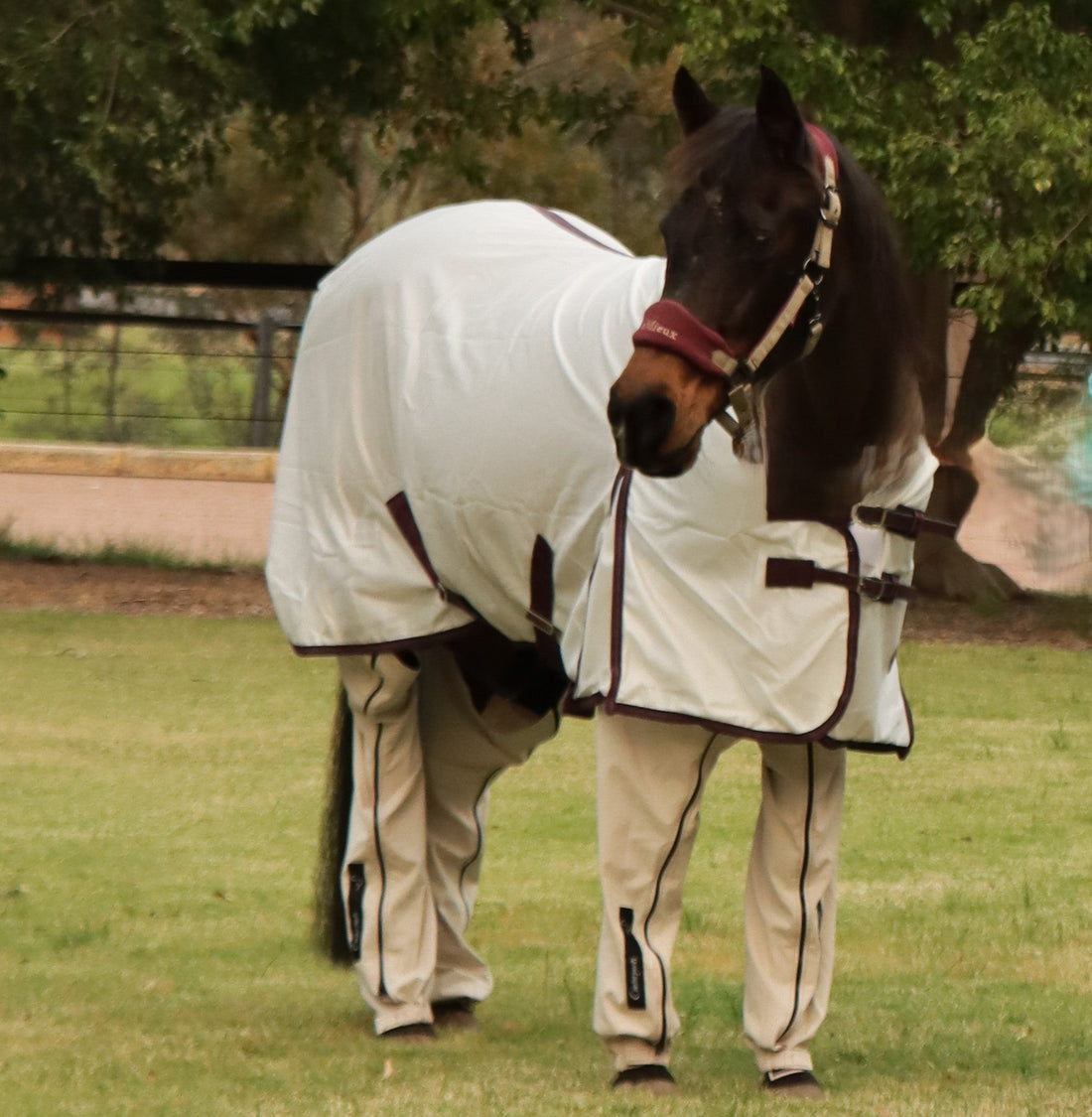ALLERGIES IN HORSES – Breaking The Cycle

I don’t know many people who either haven’t experienced allergies first hand, or have a family member, close friend or perhaps a pet who has had allergies or sensitivities. And not all allergies are the same. They can range from an acute and sudden reaction, often requiring urgent medical intervention, through to a niggly recurring issue.
But one thing they have in common is that there is a trigger that sets off an inflammatory reaction. The treatment and ongoing management may differ, depending on the type of reaction and the cause, but identifying the trigger is imperative for management of allergies. By knowing what the trigger is, if you can eliminate the trigger, you can eliminate the reaction.
Sounds simple, but it is not always possible to control or eliminate the trigger. For instance, it might seem easy to simply avoid a food trigger – although if you’re eating out, or you don’t know that the food is contained in a prepared food, this is not always possible. Similarly, if you’re reaction is triggered from proximity to a food item, you can’t always control how it was prepared, who is sitting near you that might have that food item etc.
Similarly, if allergies are triggered by certain chemicals, soap or other items applied to the skin, avoiding the use of these is important.
Allergens in our environment are generally not able to be removed or controlled, so other measures to avoid these triggers become necessary. Without becoming a hermit and removing yourself from the environment, avoiding these would normally require some form of physical barrier in the form of protective clothing.
It is no different for our horses. Many of the triggers come from their natural environment. Biting insects, pollens, grasses and even the sun for example. The obvious solution for removing these types of allergens is by providing a physical barrier between the allergen and the horse’s skin. Let’s face it, it’s unlikely you can remove most of these from the horse’s environment. It’s no coincidence that the development of protective rugs, fly veils, fly boots and now Canterpants has been designed for this purpose.
While avoiding the triggers is a really important strategy in managing allergies, it is not a replacement for treatment of the symptoms. In an acute allergic reaction medical intervention may be life saving. And for prolonged, chronic allergies there are many forms of therapy designed to desensitise, reduce the inflammatory response or build immunity.
My horse Reena was suffering badly from insect bites, and what I’ve noticed since covering her legs to avoid the bites, is that everything has improved. Her appetite, her attitude, her condition have all improved. This was not the case 12 months ago, and I believe that this improvement is from her immune system having had a chance to rest and recover, by having her legs protected by Canterpants (in addition to her rug and fly veil).
🐴Together - making our horses’ lives better – regards, Yvette
Disclaimer: These are my thoughts and opinions and should not be considered expert or medical advice. I recommend that you seek professional advice in relation to your horse/s.
Articles: Here are just a few of the many articles I found that might be of interest.
“Equine Allergies with Dr Cristina Rosales” – Horse Deals 23 June 2022
“How to treat skin allergies in horses” – Vet Voice (originally published by Equine Veterinarians Australia (EVA)
“Allergies in Horses” by Karen A. Moriello, DVM, DACVD - September 2024
"Providing Horses Relief During Allergy Season" by Lucile Vigouroux, MSc, 20 April 2024
“Allergies in Horses: An Owner’s Guide” – Vetericyn – 6 July 2024
“Managing Equine Allergies” – Elaine Pascoe – 28 May 2024
